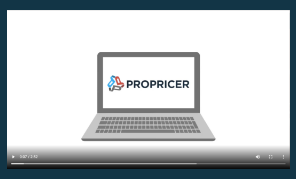In the world of government contracting and procurement, cost savings and efficiency are paramount. Whether you're an emerging or experienced player in this space—and whether you’re on the contracting or agency side—your ability to provide and procure goods and services at a lower cost is key to winning business with government customers or optimizing your agency’s funds.
A lowest-price proposal has always been the barometer against which an agency judges competitors for Lowest Price Technical Assessment contracts. But cost is fast becoming the government’s main criterion in Best-Value contract awards as well.
This article explores the importance of cost reduction and offers specific strategies to help reduce costs in both government contracts and direct procurement.
Cost reduction vs. cost cutting
Cost reduction strategies differ from cost-cutting measures because the former are proactive, strategic, and enhance productivity and profit. Alternately, cost-cutting is a last-resort tactic contractors implement when forced to change at the last minute. To remain competitive in the government contracting arena, you’ll need to find ways to reduce costs, not cut them.
Cost avoidance vs. cost savings
Similarly, government agencies should track both cost avoidance and cost savings to understand better the value delivered in each context. Cost avoidance is a reduction in cost resulting in a spend that is lower than would have been if the cost avoidance exercise had not been undertaken. One example is securing longer-term contracts with contracting firms, yet at a fixed price per year. On the other hand, cost savings are more tangible and may involve negotiating down the per-unit price of an item, thus saving money.
Carefully evaluate your direct and indirect costs
Back to contracting firms: To reduce costs in government contracts, contracting firms should carefully evaluate direct and indirect costs. Contractors have historically used the same formulas to allocate both. However, today's government contracting environment demands a thorough review of all the practices and components you have in place. This evaluation will reveal areas where you can make changes to gain the upper hand in the contract you are currently bidding on or increase your chances of scoring a win in the future.
Types of costs in contractor and agency procurement
Generally, five components make up the procurement life cycle. (Keep in mind: Simply adding up purchasing expenses will not accurately represent your total cost.)
Base costs. The key cost driver in procurement is the per-item amount. For more significant transactions, this is especially true. The per-item amount is the most considerable expense and typically the most challenging to reduce. The best method to reduce this cost is to find competing suppliers with the same products and negotiate the best price per unit.
Transportation costs. Transportation expenses are a direct procurement cost. An organization needs to develop flexible and long-term relationships with carriers to negotiate terms for bettering shipping rates.
Closing costs. There are many costs associated with outsourcing inventory. These include expenses such as brokerage, legal fees (when you hire legal advisors to draft contracts), and commissions that tend to add up.
Taxes and duties. There are considerable costs for inventory outsourced from overseas, such as tariffs, taxes, flat rates (like VAT or GST), and more. Import taxes and duties can be complex, and organizations without the in-house expertise to manage them must hire brokers to assist with the customs process.
Negotiation costs. Creating an agreement with either a contractor or agency supplier usually involves additional time researching prospective suppliers. This exercise leads to indirect labor costs. Negotiating with suppliers can also be costly, especially if you have staff that has to travel to make the agreements.
See where you can streamline your business.
Can you train your people to be more efficient? Or automate things your staff currently executes?
Take a look at your Human Resources function. With the availability of online modules to process employees’ tax documents, choice of benefits, and other administrative information, you may be able to hire fewer certified HR specialists on your team.
Study the rest of your accounting system and seek to allocate costs in ways that place your firm in a more competitive position.
Specific ways to reduce costs
To reduce costs, contracting firms and agencies can revisit the rates they are using and look for ways to allocate costs that place their firm in a more competitive position.
Often, you can implement one or more of the following strategies:
- Modify sourcing
Organizations can modify sourcing resources and procurement to reduce long-term costs. This step can involve switching to cheaper alternatives or sourcing from local producers. Instead of depending on one supplier, you can change suppliers periodically for cost advantage. - Improvise processes
Many businesses incorporate expensive processes that can be avoided. Improvising techniques to eliminate costs is one essential strategy for cost reduction. Minor improvements in manufacturing systems, such as implementing waste management processes, can help save costs in the long run. - Use energy-saving equipment
Businesses utilize a lot of energy, which tends to increase costs. Find energy-saving equipment that can help reduce energy costs and save money. - Automate processes
Automation is another way to reduce costs. For example, businesses can automate processes such as text input and document processing, saving time and reducing errors. Automation also frees up staff to focus on more strategic tasks. - Use technology to reduce travel costs
Your firm or agency can use technology such as video conferencing and online meetings to reduce travel costs. Technology has made it possible to connect with customers, suppliers, and employees from anywhere in the world.
Think twice about reducing salaries
An all-too-common way to cut costs on a contract or procurement is to cut salaries. However, shrinking your headcount or replacing your workers with younger staff who will often work at a reduced rate shouldn’t be your first choice.
This practice erodes your team’s loyalty and confidence. And it’s also much more costly than you may think to replace workers. Recruiting and training new blood is expensive, and productivity almost always declines due to a steep learning curve.
A recent long-term study by the American Center for Progress has proven that organizations spend about one-fifth of an employee’s annual salary to replace them with similar talent. It’s not a nominal expense, so consider this carefully when switching out workers or teams.
Save by slashing proposal preparation and negotiation time
When submitting or negotiating contract proposals, one way to save huge volumes of time—and subsequently, employee costs— is to render your files in the same digital format most government contractors and agencies use. Using ProPricer Contractor Edition, you can prepare any proposal submission up to five times faster than with Excel and in a format the government loves.
Maximize the efficiency and accuracy of your proposal-pricing submission, evaluation, negotiation, auditing, and revision with ProPricer. Try the Essentials version of ProPricer Contractor Edition completely free of charge for 30 days.
Many reduction avenues, one cost destination
A thorough assessment of how you handle your direct and indirect costs frequently yields information that will lead you to important cost-reduction strategies. Whether creating a new pricing structure, minimizing your overhead requirements, or outsourcing the handling of your labor rates, a detailed assessment of everything you are doing as an organization has enormous potential to reveal many things you can do to lower your final price.
Government Contracting Pricing Summit: Achieving Excellence During Uncertain Times
Network and learn from the leaders in government contracting. Attend fascinating keynote sessions and live-panel discussions on new cost-reduction techniques, speed-to-contract methodologies, and much more. Join us at the Government Contract Pricing Summit, June 20-22, 2023, in San Diego, CA. Register now.
Sources




